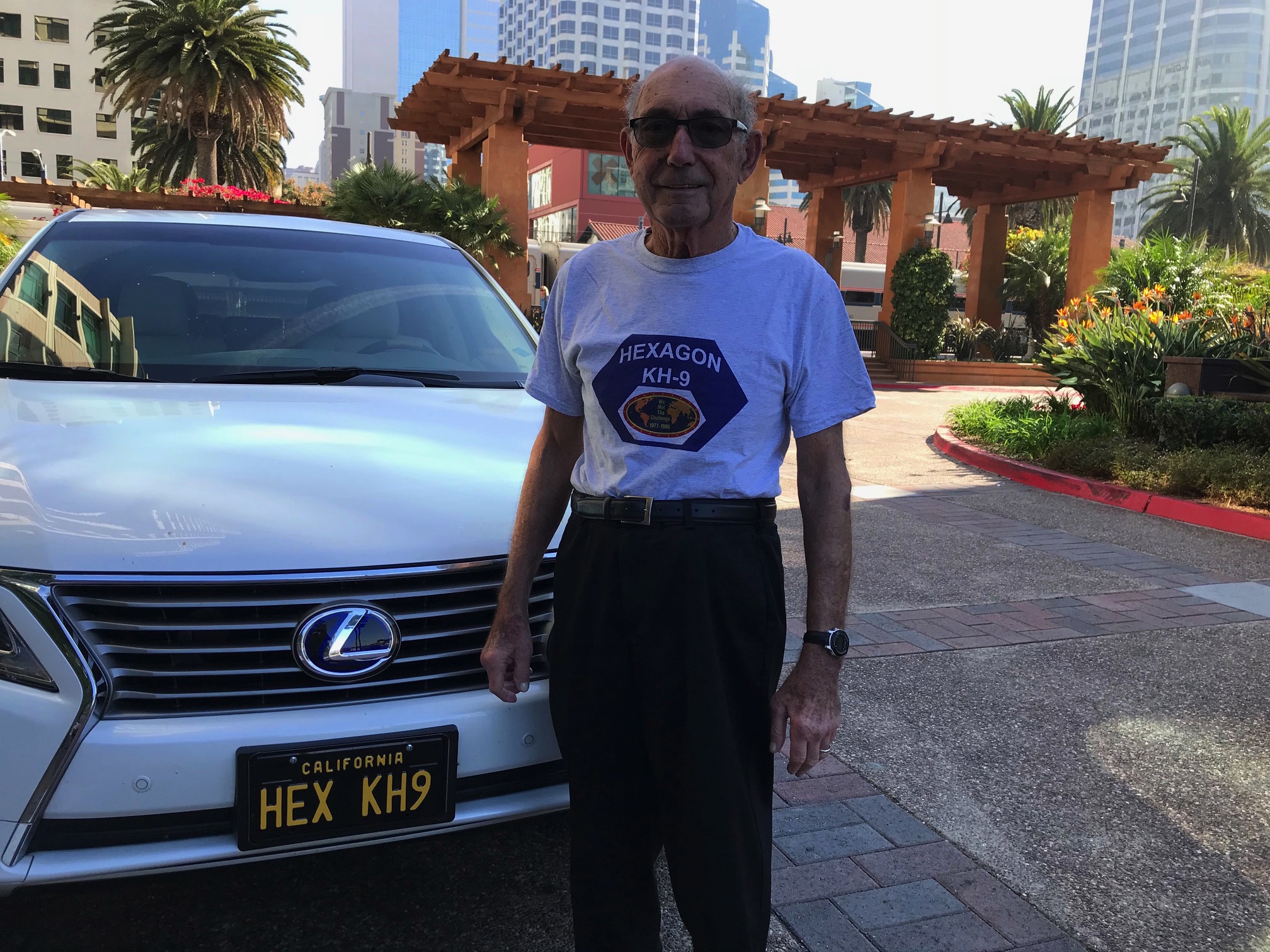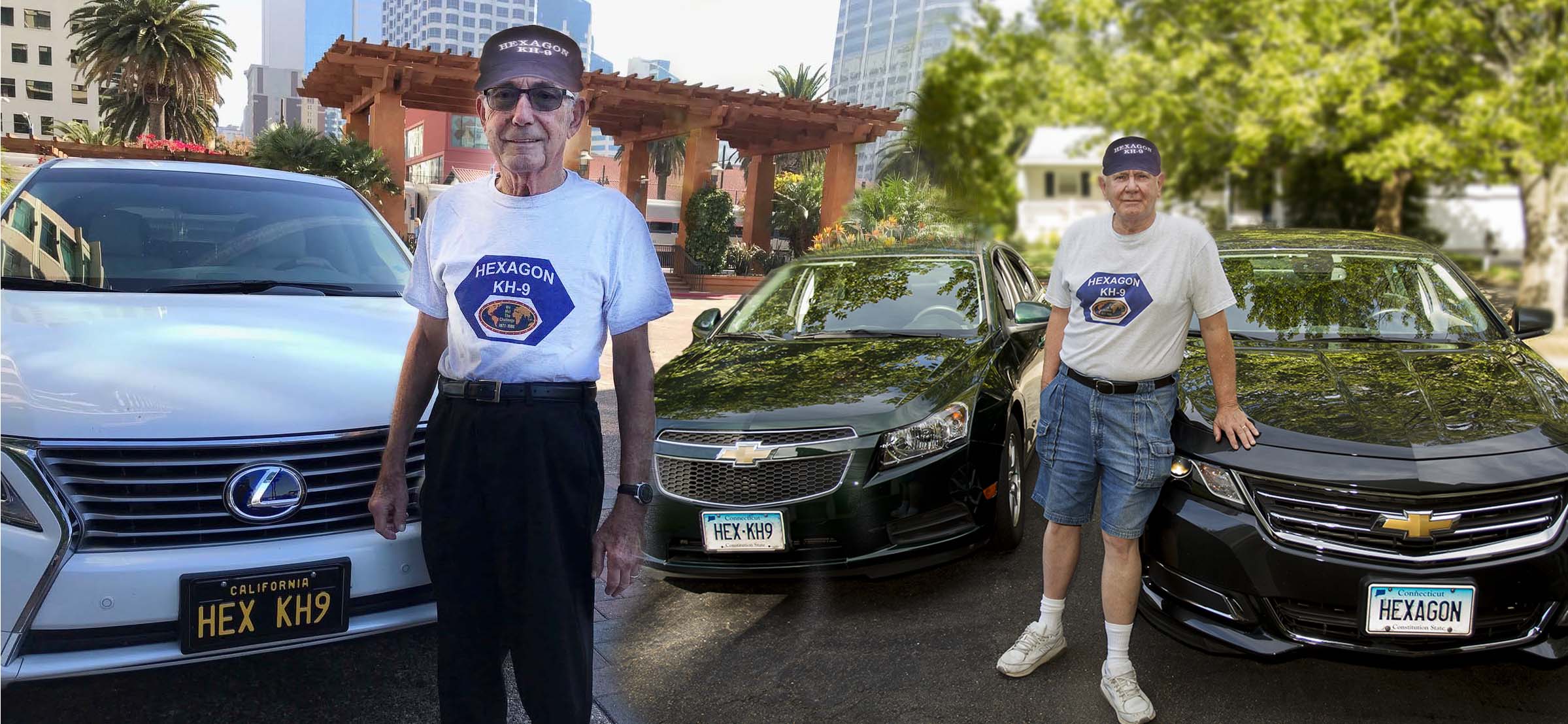Decades later are recalled
Decades Later, a Cold War Secret Is Revealed
Published December 25, 2011 Associated Press
DANBURY, Conn. – For more than a decade they toiled in the strange, boxy-looking building on the hill above the municipal airport, the building with no windows (except in the cafeteria), the building filled with secrets.
They wore protective white jumpsuits, and had to walk through air-shower chambers before entering the sanitized "cleanroom" where the equipment was stored.
They spoke in code.
Few knew the true identity of "the customer" they met in a smoke-filled, wood-paneled conference room where the phone lines were scrambled. When they traveled, they sometimes used false names.
At one point in the 1970s there were more than 1,000 people in the Danbury area working on The Secret. And though they worked long hours under intense deadlines, sometimes missing family holidays and anniversaries, they could tell no one — not even their wives and children — what they did.
They were engineers, scientists, draftsmen and inventors — "real cloak-and-dagger guys," says Fred Marra, 78, with a hearty laugh.
He is sitting in the food court at the Danbury Fair mall, where a group of retired co-workers from the former Perkin-Elmer Corp. gather for a weekly coffee. Gray-haired now and hard of hearing, they have been meeting here for 18 years. They while away a few hours nattering about golf and politics, ailments and grandchildren. But until recently, they were forbidden to speak about the greatest achievement of their professional lives.
"Ah, Hexagon," Ed Newton says, gleefully exhaling the word that stills feels almost treasonous to utter in public.
It was dubbed "Big Bird" and it was considered the most successful space spy satellite program of the Cold War era. From 1971 to 1986 a total of 20 satellites were launched, each containing 60 miles of film and sophisticated cameras that orbited the earth snapping vast, panoramic photographs of the Soviet Union, China and other potential foes. The film was shot back through the earth's atmosphere in buckets that parachuted over the Pacific Ocean, where C-130 Air Force planes snagged them with grappling hooks.
The scale, ambition and sheer ingenuity of Hexagon KH-9 was breathtaking. The fact that 19 out of 20 launches were successful (the final mission blew up because the booster rockets failed) is astonishing.
So too is the human tale of the 45-year-old secret that many took to their graves.
Hexagon was declassified in September. Finally Marra, Newton and others can tell the world what they worked on all those years at "the office."
"My name is Al Gayhart and I built spy satellites for a living," announced the 64-year-old retired engineer to the stunned bartender in his local tavern as soon as he learned of the declassification. He proudly repeats the line any chance he gets.
"It was intensely demanding, thrilling and the greatest experience of my life," says Gayhart, who was hired straight from college and was one of the youngest members of the Hexagon "brotherhood".
He describes the white-hot excitement as teams pored over hand-drawings and worked on endless technical problems, using "slide-rules and advanced degrees" (there were no computers), knowing they were part of such a complicated space project. The intensity would increase as launch deadlines loomed and on the days when "the customer" — the CIA and later the Air Force — came for briefings. On at least one occasion, former President George H.W. Bush, who was then CIA director, flew into Danbury for a tour of the plant.
Though other companies were part of the project — Eastman Kodak made the film and Lockheed Corp. built the satellite — the cameras and optics systems were all made at Perkin-Elmer, then the biggest employer in Danbury.
"There were many days we arrived in the dark and left in the dark," says retired engineer Paul Brickmeier, 70.
He recalls the very first briefing on Hexagon after Perkin-Elmer was awarded the top secret contract in 1966. Looking around the room at his 30 or so colleagues, Brickmeier thought, "How on Earth is this going to be possible?"
One thing that made it possible was a hiring frenzy that attracted the attention of top engineers from around the Northeast. Perkin-Elmer also commissioned a new 270,000-square-foot building for Hexagon — the boxy one on the hill.
Waiting for clearance was a surreal experience as family members, neighbors and former employers were grilled by the FBI, and potential hires were questioned about everything from their gambling habits to their sexuality.
"They wanted to make sure we couldn't be bribed," Marra says.
Clearance could take up to a year. During that time, employees worked on relatively minor tasks in a building dubbed "the mushroom tank" — so named because everyone was in the dark about what they had actually been hired for.
Joseph Prusak, 76, spent six months in the tank. When he was finally briefed on Hexagon, Prusak, who had worked as an engineer on earlier civil space projects, wondered if he had made the biggest mistake of his life.
"I thought they were crazy," he says. "They envisaged a satellite that was 60-foot long and 30,000 pounds and supplying film at speeds of 200 inches per second. The precision and complexity blew my mind."
Several years later, after numerous successful launches, he was shown what Hexagon was capable of — an image of his own house in suburban Fairfield.
"This was light years before Google Earth," Prusak said. "And we could clearly see the pool in my backyard."
There had been earlier space spy satellites — Corona and Gambit. But neither had the resolution or sophistication of Hexagon, which took close-range pictures of Soviet missiles, submarine pens and air bases, even entire battalions on war exercises.
According to the National Reconnaissance Office, a single Hexagon frame covered a ground distance of 370 nautical miles, about the distance from Washington to Cincinnati. Early Hexagons averaged 124 days in space, but as the satellites became more sophisticated, later missions lasted twice as long.
"At the height of the Cold War, our ability to receive this kind of technical intelligence was incredible," says space historian Dwayne Day. "We needed to know what they were doing and where they were doing it, and in particular if they were preparing to invade Western Europe. Hexagon created a tremendous amount of stability because it meant American decision makers were not operating in the dark."
Among other successes, Hexagon is credited with providing crucial information for the Strategic Arms Limitation Talks between the United States and the Soviet Union in the 1970s.
From the outset, secrecy was a huge concern, especially in Danbury, where the intense activity of a relatively small company that had just been awarded a massive contract (the amount was not declassified) made it obvious that something big was going on. Inside the plant, it was impossible to disguise the gigantic vacuum thermal chamber where cameras were tested in extreme conditions that simulated space. There was also a "shake, rattle and roll room" to simulate conditions during launch.
"The question became, how do you hide an elephant?" a National Reconnaissance Office report stated at the time. It decided on a simple response: "What elephant?" Employees were told to ignore any questions from the media, and never confirm the slightest detail about what they worked on.
But it was impossible to conceal the launches at Vandenberg Air Force base in California, and aviation magazines made several references to "Big Bird." In 1975, a "60 Minutes" television piece on space reconnaissance described an "Alice in Wonderland" world, where American and Soviet intelligence officials knew of each other's "eyes in the sky" — and other nations did, too — but no one confirmed the programs or spoke about them publicly.
For employees at Perkin-Elmer, the vow of secrecy was considered a mark of honor.
"We were like the guys who worked on the first atom bomb," said Oscar Berendsohn, 87, who helped design the optics system. "It was more than a sworn oath. We had been entrusted with the security of the country. What greater trust is there?"
Even wives — who couldn't contact their husbands or know of their whereabouts when they were traveling — for the most part accepted the secrecy. They knew the jobs were highly classified. They knew not to ask questions.
"We were born into the World War II generation," says Linda Bronico, whose husband, Al, told her only that he was building test consoles and cables. "We all knew the slogan 'loose lips sink ships.'"
And Perkin-Elmer was considered a prized place to work, with good salaries and benefits, golf and softball leagues, lavish summer picnics (the company would hire an entire amusement park for employees and their families) and dazzling children's Christmas parties.
"We loved it," Marra says. "It was our life."
For Marra and his former co-workers, sharing that life and their long-held secret has unleashed a jumble of emotions, from pride to nostalgia to relief — and in some cases, grief.
The city's mayor, Mark Boughton, only discovered that his father had worked on Hexagon when he was invited to speak at an October reunion ceremony on the grounds of the former plant. His father, Donald Boughton, also a former mayor, was too ill to attend and died a few days later.
Boughton said for years he and his siblings would pester his father — a draftsman — about what he did. Eventually they realized that the topic was off limits.
"Learning about Hexagon makes me view him completely differently," Boughton says. "He was more than just my Dad with the hair-trigger temper and passionate opinions about everything. He was a Cold War warrior doing something incredibly important for our nation."
For Betty Osterweis the ceremony was bittersweet, too. Not only did she learn about the mystery of her late husband's professional life. She also learned about his final moments.
"All these years," she said, "I had wondered what exactly had happened" on that terrible day in 1987 when she received a phone call saying her 53-year-old husband, Henry Osterweis, a contract negotiator, had suffered a heart attack on the job. At the reunion she met former co-workers who could offer some comfort that the end had been quick.
Standing in the grounds of her late husband's workplace, listening to the tributes, her son and daughter and grandchildren by her side, Osterweis was overwhelmed by the enormity of it all — the sacrifice, the secrecy, the pride.
"To know that this was more than just a company selling widgets ... that he was negotiating contracts for our country's freedom and security," she said.
"What a secret. And what a legacy."
___
Helen O'Neill is a New York-based national writer for The Associated Press. She can be reached at features(at)ap.org.






